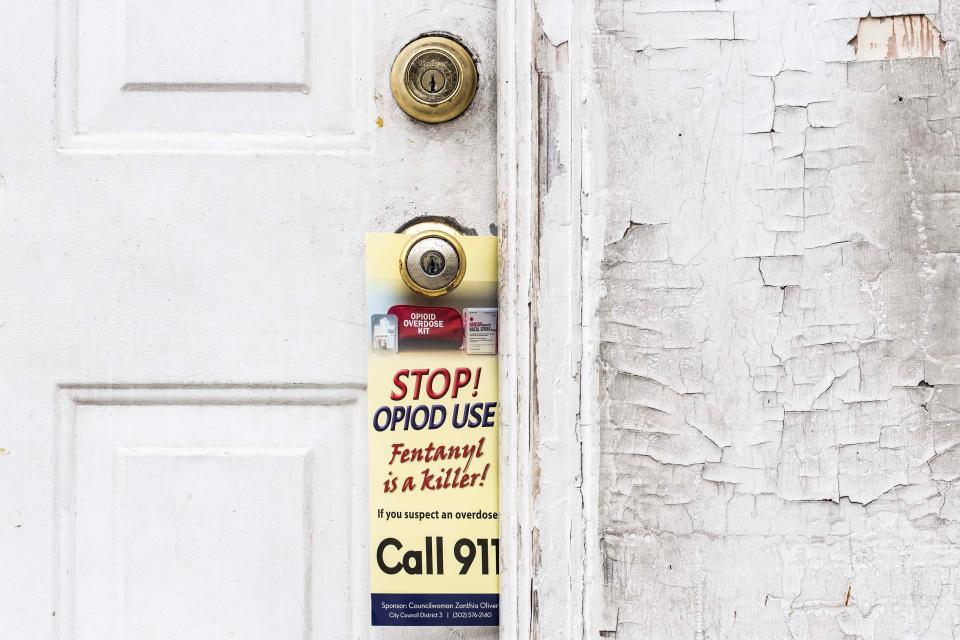For the first time in 10 years, Delaware sees a drop in fatal overdoses. Six reasons why
The fight against the opioid epidemic has been long and difficult. From the spread of fentanyl to the recent addition of the animal tranquilizer xylazine to the drug supply, Delaware's advocates, doctors and public health officials have had no shortage of challenges when it comes to reducing the harm of addiction statewide.
But new data from the state's Division of Forensic Science brings a sign of hope: For the first time in a decade, the number of confirmed overdose deaths in Delaware decreased from one year to the next.
Findings released Thursday showed that 527 Delawareans died of accidental drug overdoses in 2023, excluding those that were not reported or autopsied. It's a 1.8% decrease from the year prior.
"No number of drug deaths is acceptable, but seeing the slight decrease is encouraging," said Joanna Champney, director of the Delaware Division of Substance Abuse and Mental Health. "I think it indicates that we're heading in the right direction with our efforts."

BACKGROUND: The opioid addiction crisis: How it started, who's involved and what else you need to know
How the state is reducing overdose deaths
Champney attributed the reduction in deaths to the state's widespread efforts and partnerships in the community. Delaware's approach to addressing addiction falls into six categories:
reducing stigma
increasing screenings for opioid use disorder
educating healthcare professionals on medication-assisted treatment like suboxone
distributing the overdose-reversing drug Narcan
expanding street outreach
improving the state's addiction treatment service system
Lt. Gov. Bethany Hall-Long, who chairs the Delaware Behavioral Health Consortium and co-chairs the Prescription Opioid Settlement Distribution Commission, said that the reduction in fatal overdoses "speaks volumes" to the collaboration between different groups and state agencies toward the common goal of combatting addiction.
Both Champney and Hall-Long said there was no individual campaign or method that made the difference. Instead, it's the diversity of partnerships and strategies that's helped lead to a reduction in overdose deaths.

Expanding methods of outreach, information and services is especially important as the state continues to see rising overdose deaths among Black and Hispanic residents, according to Champney. She said the state is sharpening its focus on culturally specific services and responses, including another round of Health Equity Advancement Project mini-grants.
What comes next?
More demographic-level data related to drug overdoses — including the drugs involved and the race, age and county of residence of the person who died — will soon be released in the Division of Forensic Science's annual report. The report is slated to come out in mid to late April.
Once the new data is released, the state and other groups focused on reducing overdoses can better use it to focus their efforts where they are most needed.
"We still have so much more work to do, but those coordinated strategies are helping us to gradually bring the numbers down," Champney said. "So hopefully in future years we'll see even greater reductions, and we won't stop working until that number is zero."

MORE: Fatal overdoses in Delaware appear to be going down, but new troubling trends are emerging
How to find help
Delaware Hope Line: 833-9-HOPEDE for free 24/7 counseling, coaching and support, as well as links to mental health, addiction and crisis services. Resources also can be found on the Help is Here website.
Suicide and Crisis Lifeline: 988
SAMHSA National Helpline: 800-662-HELP (4357) for free 24/7 substance abuse disorder treatment referral services. Treatment service locators also are available online at findtreatment.samhsa.gov or via text message by sending your ZIP code to 435748.
Send story tips or ideas to Hannah Edelman at [email protected]. For more reporting, follow them on X at @h_edelman.
This article originally appeared on Delaware News Journal: Overdose deaths decreased by 1.8% last year. What it means
